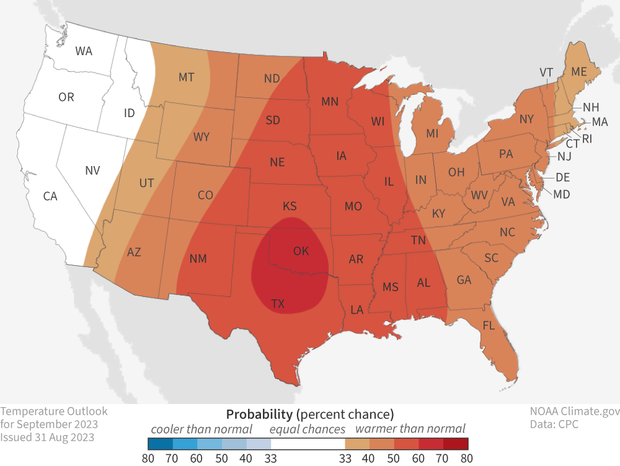By Patrice ‘Pete’ Parsons
Executive Director
They say this one is in the record books. Just ask John Nielsen-Gammon, the Texas climatologist.
Gammon says 2023 was the second hottest ever, averaging 85.3 degrees between June and August. In case you forgot, 2011 brought home the gold with an average temperature of 86.8 degrees.

Still, this summer logged in some grim numbers, like Austin with the most 105+ degree days (40) and most consecutive triple-digit days (45), ending on August 21. This summer also included 10 all-time records for demand, like on September 6 when ERCOT declared an Energy Emergency Alert Level 2 (EEA 2), meaning ERCOT could initiate controlled outages if demand wasn’t reduced or generators couldn’t provide more juice.
On September 7, ERCOT issued yet another conservation appeal citing continued high temperatures, high demand, low wind and declining solar power generation into the afternoon and evening hours. The PUC press release on September 7 reiterated ERCOT’s rationale for conservation, citing low wind and declining solar power generation.
What we now know is that ERCOT told state regulators that a congested transmission line in the southern part of the state prevented wind-generated energy from being transmitted to the northern part of the state. Regulators at the PUC also believe gas and coal outages in the north made things worse. Last month, the New York Times reported that ERCOT withheld electricity supply from the market to create the reserve, which had the effect of pushing up prices.
Just as recently as this past legislative session, lawmakers enthusiastically proposed some dozen anti-renewable bills, continuing to promote long-held falsehoods about the disadvantages of renewables on the grid. Instead, they lavished conspicuous financial incentives on the state’s oil and gas industry, a tab we taxpayers will ultimately be on the hook for.
But enough about the bad and ugly. Let’s talk about the unmistakable good, like how solar, wind and battery storage outperformed quietly and spectacularly. All summer.
According to Dr. Joshua Rhodes, a research scientist with the Webber Energy Group at the University of Texas, the state produced twice as much solar power as last year. In fact, on August 10, wind and solar energy generated enough power to meet 25% of demand during the peak hour of usage, according to ERCOT.
Using EIA data and Google’s Project Sunroof, TXSES policy committee member Larry Howe and TXSES intern Ethan Miller estimate there are nearly 300,000 residential and commercial distributed solar rooftops in Texas. And that number is growing.
City Public Service, San Antonio’s municipal utility, has a solicitation on the street for up to 500 MW of energy storage projects. Proposals are due October 18.
A newly published study from our friends at Conservative Texans for Energy Innovation (CTEI), in partnership with the Advanced Power Alliance and the Solar Energy Industries Association, shows no evidence of negative market impact for residential properties near utility-scale solar facilities. In all counties studied, the sales prices and marketing times of residential properties located near solar projects were generally consistent with residential sales further away.
“As Texas continues to lead on renewable energy, it is crucial our leaders have access to objective data to help dispel misinformation and false narratives,” said Matt Welch, State Director of the CTEI.
Although this summer’s heat is behind us, the fragility of the Texas grid is right where we left it: front and center in our lives and livelihoods. On October 14, parts of Texas, especially Corpus Christi, Odessa and San Antonio, will witness totality during a ‘ring of fire’ solar eclipse. Beginning at 10:15 am CT with maximum coverage of the Sun at 11:54 am CT, ending at 1:33 pm CT. ERCOT officials are already planning for potential impacts on the state’s solar resources. Don’t forget to wear your eclipse glasses.
Next worry: winter.
PP
